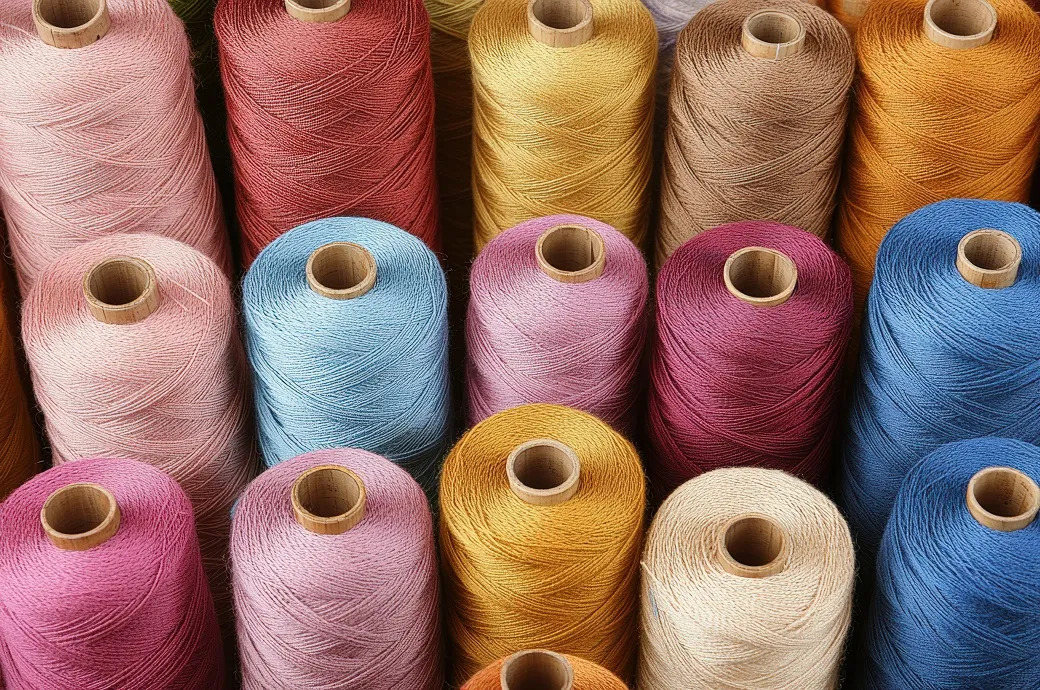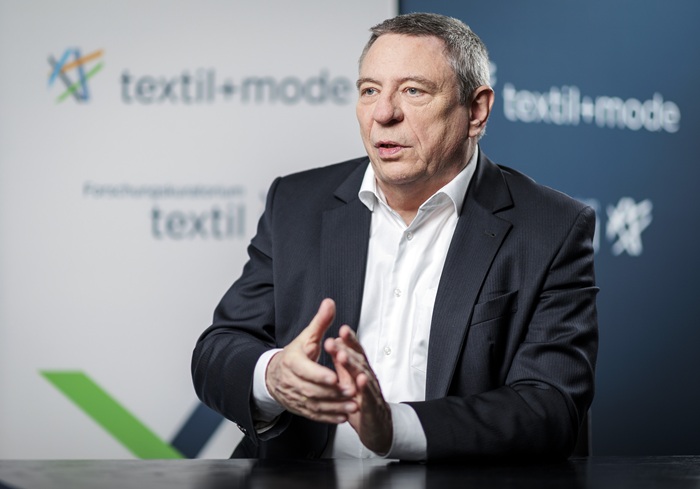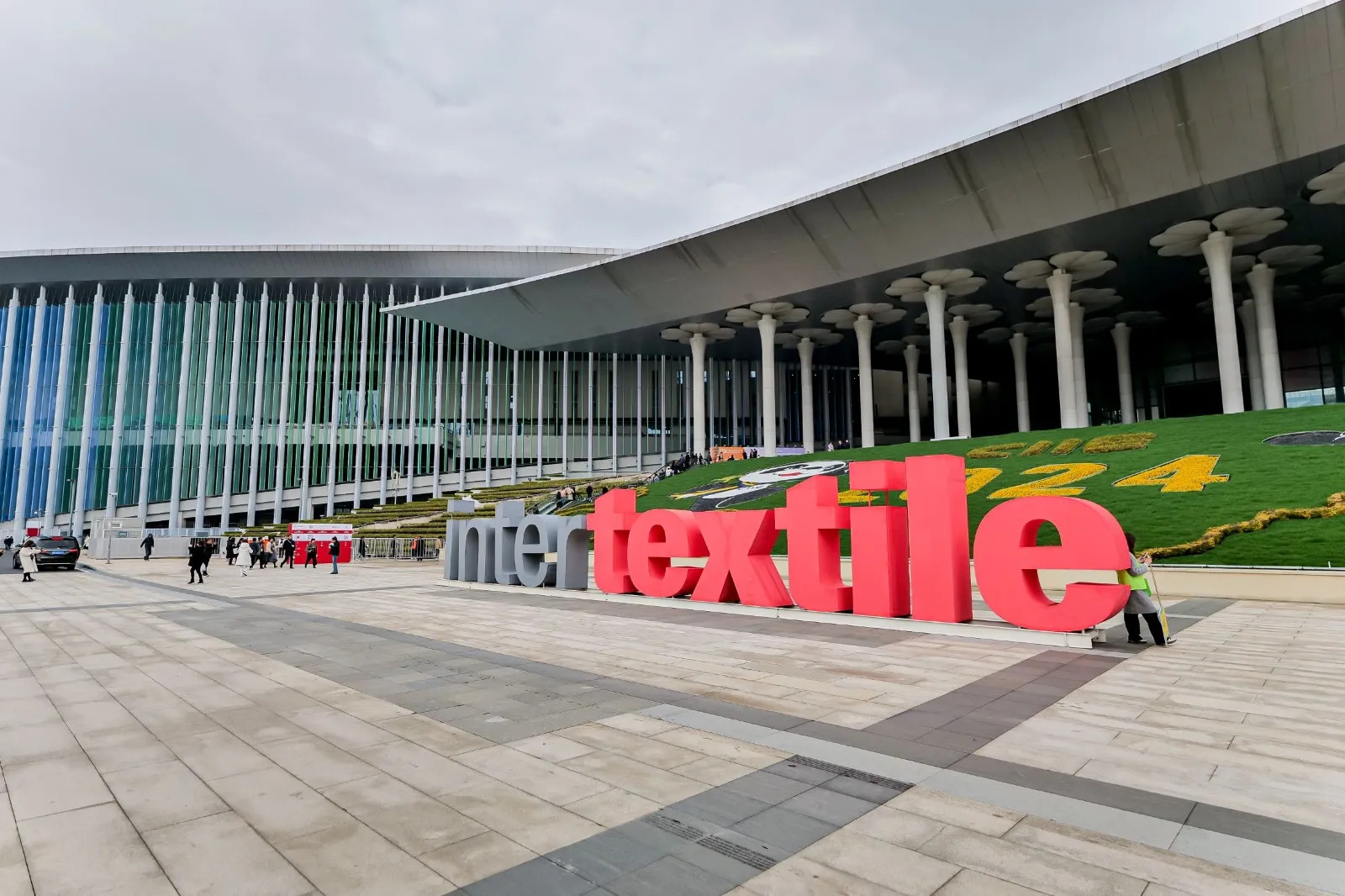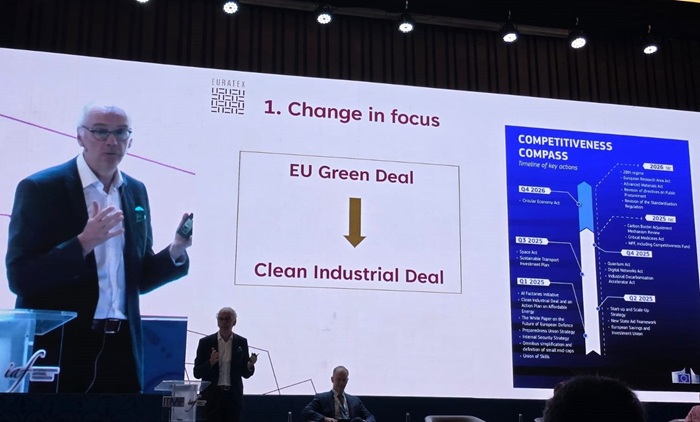FW
Surecom Media will organise ApparelConnect 2018, dedicated to the logistics segment of the apparel industry, at Shangri-La's Eros Hotel, New Delhi on May 17, 2018. The day-long conference would have four panel discussions where several top industry leaders from leading apparel export companies, supply chain professionals, logistics service providers, airlines and cargo terminal operators will participate and share knowledge and extensive experience.
The panel discussions will be on following themes: International Logistics; On Time Delivery: The Vital Aspect; Making Future Ready the Current Supply Chain Structure of Garment Companies and Managing Off Shore Sourcing and Outsourcing; Customs and Border Regulations; Warehousing Decisions; and Managing Returns of Fashion Retailing.
Supply chain professionals from leading apparel manufacturers and export companies such as Bombay Rayon Fashion, Eastman Exports Global Clothing, Pearl Global Industries, Richa Global Exports, Pratibha Syntex among others will gather under one roof and share knowledge and logistics experience with leaders who are driving the industry forward.
ITM 2018, the largest regional fair for world textile machinery and technology sector with investors and trade delegations from nearly 100 countries worldwide, will be held in Istanbul from April 14 to 17. Local and foreign companies are set to display latest textile machinery and technology. The ITM exhibition is one of the two largest in international and the largest in the region in its segment in terms of the number of visitors/participants. Besides being one of Turkey’s most important brands internationally, the country is also a textile bridge between the East and the West.
A key aspect that makes it attractive for visitors is the fact that the fair is held in Istanbul, a prosperous city with growing transportation facilities and expanding world trade. Following extensive PR activities for ITM 2018 — organised by Teknik Fairs and Tüyap, with the co-operation of TEMSAD — the exhibition area is already booked to capacity.
The exhibition, which broke a record by hosting about 50,000 visitors in the previous event, is expected to break last season’s record. Many textile machinery manufacturers, both foreign and domestic, who are the leaders in cotton to yarn, weaving to knitting and dyeing and also digital printing will launch their new textile machines and technologies in ITM 2018. Manufacturers in Turkey are also looking to showcasing their innovations here.
ITM 2018 will be held concurrently with the HIGHTEX 2018 International Technical Textiles & Nonwoven Exhibition, Istanbul and the 8th International Textile Conference. With the synergy that will arise from the gathering of all these events, Istanbul will host a world-wide sectoral meeting and textile feast during April 14-17.
DyStar and RotaSpray have jointly developed an indigo spray dyeing procedure, which allows denim producers to significantly reduce their environmental impact. The new technology offers high flexibility for dyeing small lot sizes, reduced water use and effluent discharge, lower impact on yarn in the dyeing process and simplified recipe changes.
DyStar and RotaSpray have been working together to develop it further and make it available for bulk production in important denim markets like Turkey, India and Pakistan. Although rotary atomizers have been established for several decades in the textile industry they were mainly used for rewetting textiles with moisture. But recent cost pressures and a global demand for more sustainable solutions were motivators for R&D and led to the recent technology leap.
RotaSpray, founded in 2013, manufactures rotating atomizers for tailor-made conceptions in dyeing and finishing of warp yarn, fabric and nonwoven as well. DyStar is a leading dyestuff and chemical manufacturer and solution provider, offering customers across the globe a broad portfolio of colorants, specialty chemicals, and services. DyStar also caters to multiple sectors including the paints, coatings, paper and packaging industries. Its expansion into the food and beverages and personal care sectors reinforces the company’s position as a specialty chemical manufacturer.
Vietnam’s exports of textiles and garments to China have exponentially increased in recent years, surging from $2.7 billion in 2016 to around $3.2 billion in 2017. Economist report the average annual growth of exports remained more than 20 per cent for the past three years. Data from the General Department of Vietnam Customs show the import value of textile and garment from China touched around $9 billion last year, accounting for over 42.7 per cent of the country’s total imports and rose over 12 per cent last year. Value trade was nearly four times higher than that of Republic of Korea and nearly five times higher than that of Taiwan - the two major import markets of Vietnam in recent years.
China and Vietnam are known rivals in many garment export markets. China’s textile and garment exports touched $260 billion annually, while Vietnam’s apparel products were initially exported to the Chinese market, surging to over $31 billion last year. The Vietnam Textile and Apparel Association (VITAS) estimates it will be easier for them to export higher number to China from 2018 following significant growth in Chinese, Russian and Cambodian markets. As per Vu Duc Giang, President, VITA the reasons for the increase is Vietnam’s fibre exports to China benefit due to a zero per cent tariff under the ASEAN-China FTA, while products from other markets have to pay 3-5 per cent duty.
Further, the Regional Comprehensive Economic Partnership (RCEP) between ASEAN and the six countries of China, the ROK, Japan, India, Australia and New Zealand is expected to boost Vietnam’s exports to China.
By the end of 2017, China was among the top five consumers of Vietnam’s textile and garment products valued at over $3 billion. Le Tien Truong, General Director, Vietnam National Textile and Garment Group (Vinatex), says their country has so far been the world’s leading textile and garment exporter but Chinese products are dominating the domestic market. However, remarkable improvements have been seen in Vietnam’s exports to China.
The US Department of Agriculture (USDA) reports price of cotton is forecast to fall by 12 per cent next season, despite a steep rise in Chinese imports and the prospect of 20 per cent of the crop in drought-hit US Southern plains being lost. The USDA, presenting its first full estimates for world cotton supply/demand in 2018-19, forecast the Cotlook, A index of physical prices, will “decline about 10 cents to 73 cents a pound” on a year-average basis.
The forecast came despite an estimate that world cotton stocks will drop by 5.9m bales to a seven-year low of 82.7m bales over the season. Chinese imports may rise 40 per cent to a four-year high of 7.0m bales as the country’s drive to erode its huge state inventories, built by a now-scrapped guaranteed pricing scheme.
USDA says, “China’s reserve could fall to just about 20 per cent of its peak of 53m bales by the end of 2018-19.”
Inventories outside China, which in available to the world market are more significant in pricing, were estimated to rise next season by around 1.4m bales to a record high of 49.1m bales. Increased supplies outside of China are expected to pressure cotton prices in 2018-19.
In the US, officials forecast stocks will stabilise at 6.0m bales next season, due partly to a forecast of exports growth by 1.5m bales, to a 13-year high of 16.0m bales. Official US meteorologists for the southern Plains reporting on the seasonal outlook mid-February, from “indicates that drought will persist through the end of May for much of the region, with the probability of below-average precipitation forecast”.
A Dubai-based textile company manufacturing in Kenya says the high cost of power and enhanced minimum wage have raised the cost of production and their products may be out-priced in the market. United Aryan, which has been operating in Kenya for the last 16 years, is not happy to pay higher energy tariffs/wages as against countries such as Ethiopia, Rwanda, Malawi and Egypt where the cost of labour is much cheaper. The minimum wage in Kenya is Sh13,475 and forecast to rise to Sh15,372 this year if recommendations, by the Central Organisation of Trade Union secretary-general Francis Atwoli, to the Federation of Kenya Employers is ratified.
United Aryan’s founder and chairman Pankaj Bedi says manufacturing sector in Kenya has a huge potential for growth unlike other countries in East African region. The only challenge they are facing at the moment is the high cost of power and high wages which have left them struggling to meet production costs.
Kenya also charges organisations around $0.15 per kilowatt an hour when taxes and other levies are incorporated, which also makes business uncompetitive as against Ethiopia where manufacturers pay about 0.4 (Sh4.14) per kilowatt hour. Bedi says a number of companies will prefer setting up their operations in Ethiopia because the cost of power, land and labour is cheaper.
Products in Kenya can only remain competitive if electricity tariffs are charged at $ 0.7 (Sh7) per kilowatt hour, he said. Should the situation persist, companies planning to set up bases in Africa will prefer operating in countries where the cost of power and labour is relatively cheaper. The laid back performance of the sector has been seen as the reason Kenya failed to achieve the targeted sustainable annual 10 per cent growth in GDP from 2010 as envisioned in the Vision 20130 plans.
Sensient has introduced a new range of high-performance digital pigment inks. Xennia Emerald PC is suitable for direct printing of textiles. Based on innovative dispersion and binder technology, Xennia Emerald PC changes the game for printers by offering excellent color strength with unrivalled printing performance.
Designed to maximise printing performance in production environments, Emerald PC inks also offer the peak in color performance with an optimized ink set to provide an extended gamut. These inks deliver minimised pre- and post-processing by including a revolutionary binder technology within the ink, eliminating the need to use a post application fixing polymer.
Key to the performance of Emerald PC is including a binder within the ink while increasing the color strength it maximizes open time and latency. A further key advantage of Xennia Emerald PC inks is their cross compatibility with printhead technologies, allowing proofing and production with the same ink set, providing ultimate flexibility for users with multiple systems.
Sensient was the first company to release a digital pigment ink for textiles. It has applied all the learnings from the market to provide a solution to take digital pigment printing to the next level. Successfully printed on a range of digital printers, the developed inks show exceptional print and color performance.
Cotton prices are becoming lower and demand for cotton is increasing in India. This has created a congenial atmosphere for profitability in the textile sector. A higher-than-expected rise in cotton acreage at 19 per cent and a consequent 11 per cent increase in crop production in fiscal year 2017-18 are likely to moderate cotton prices in fiscal year ’19.
Better margins, modest reduction in working capital requirements and subdued capex in fiscal year ’19 are expected to improve the overall credit profile. However, there are constraints due to the possible impact of pink bollworm on cotton output and prices on the outlook of the textile sector. The same was extended to the synthetic sector owing to the increase in crude oil prices.
The trend of shifting from cotton to synthetic yarns is expected to slow down as increasing crude prices will narrow down the price difference between the two categories. Operating margins of synthetic manufacturers may witness volatile margins due to crude price fluctuations and delays in passing on cost inflation. Domestic demand decelerated due to demonetization and the GST. The second half of the financial year showed the bottomed out effect due to this.
Nordstrom’s stock’s have risen close to 30 per cent since Thanksgiving, on investors’ expectations of solid profits. The company’s market capitalization is close to $9 billion. Comparable sales rose 1.2 per cent in the nine weeks ended December 30 compared with the same period last year, helped by growth at its off-price discount chain Nordstrom Rack and online businesses. The department store chain slightly raised its full-year earnings forecast at the time.
The family group, which owns 31.2 per cent of the storied retailer, is considering becoming a private company in the belief it can better manage the operational restructuring and transition to e-commerce away from the public markets.
The Nordstrom family group, which has partnered a buyout firm, had suspended its attempt to take the company private in October because of difficulties in arranging debt financing for its bid ahead of the key holiday shopping season. Investment banks at the time balked at providing the debt financing required for the bid of between seven billion dollars and eight billion dollars on terms that the family group wanted.
Nordstrom’s rival Hudson’s Bay, owner of the Saks Fifth Avenue and Lord & Taylor retail chains, also explored going private last year, though these considerations did not progress.
H&M expects 2018 to be a challenging year. Same-store sales are expected to see growth only in 2019. H&M continues to battle through high levels of inventory and sub-par styles on sales floors around the world, which will weigh on profits this year. The fast fashion retailer has over 4,000 stores globally and expects online sales to grow 25 per cent in 2018.
Ultimately, investors will continue to heavily discount a more bullish longer term outlook until supportive trading evidence starts emerging. Competition is getting fierce. Primark, which is known for its ultra cheap clothing, has been attracting more cost-conscious customers from H&M and could become a bigger threat as it expands more into the US. Zara has seen double-digit sales growth. It has an advantage in following the whims of fashion as it’s able to move the latest designs to the rack within two weeks. It has also highly integrated its online and physical stores, this year debuting a popup store in London designed primarily for ordering and collecting of online orders.
Even Gap has seen its shares increase more than 40 per cent over the past year. Sales for the iconic American brand have stabilized with a push towards trendier basics and various online initiatives.












